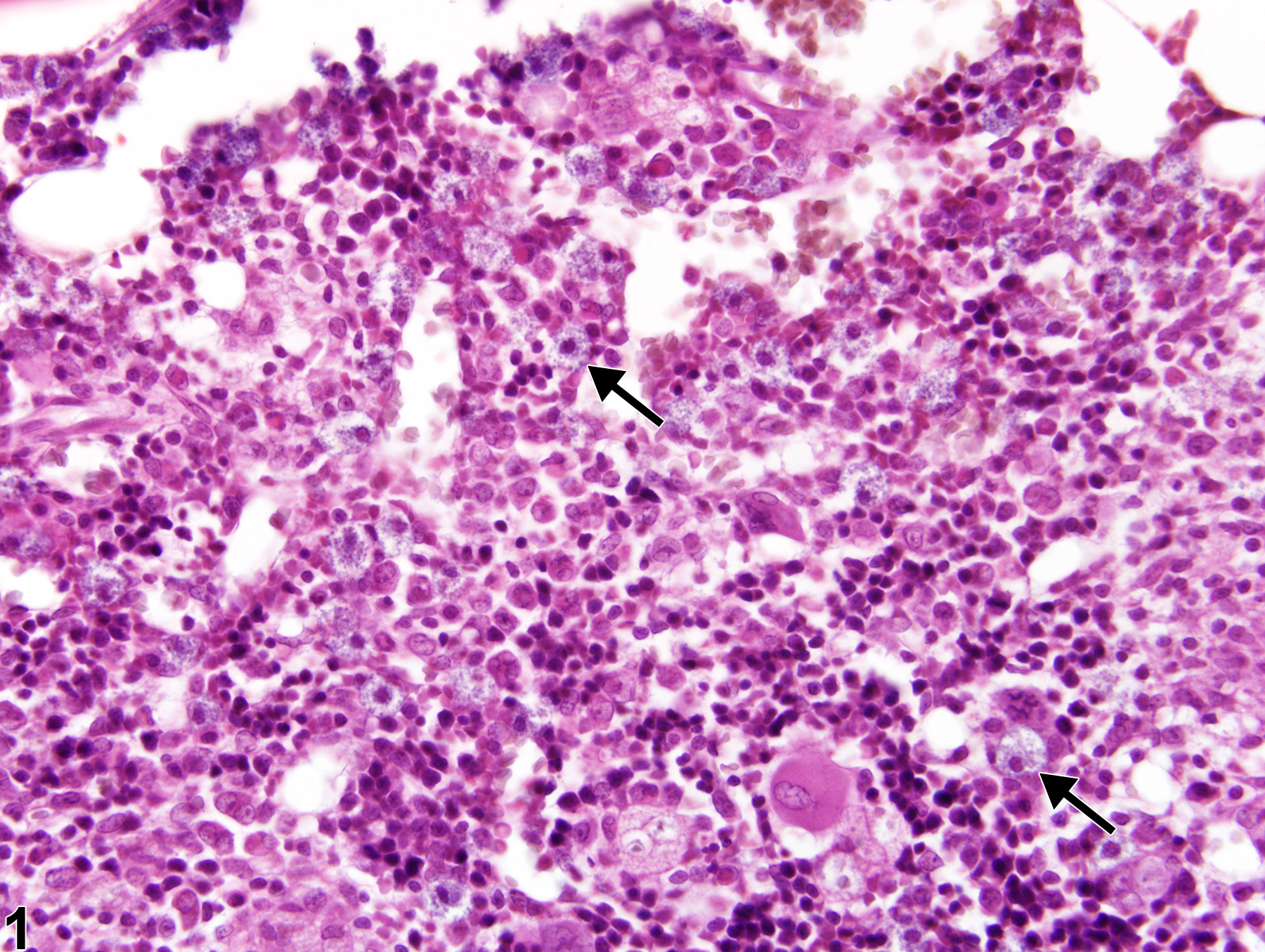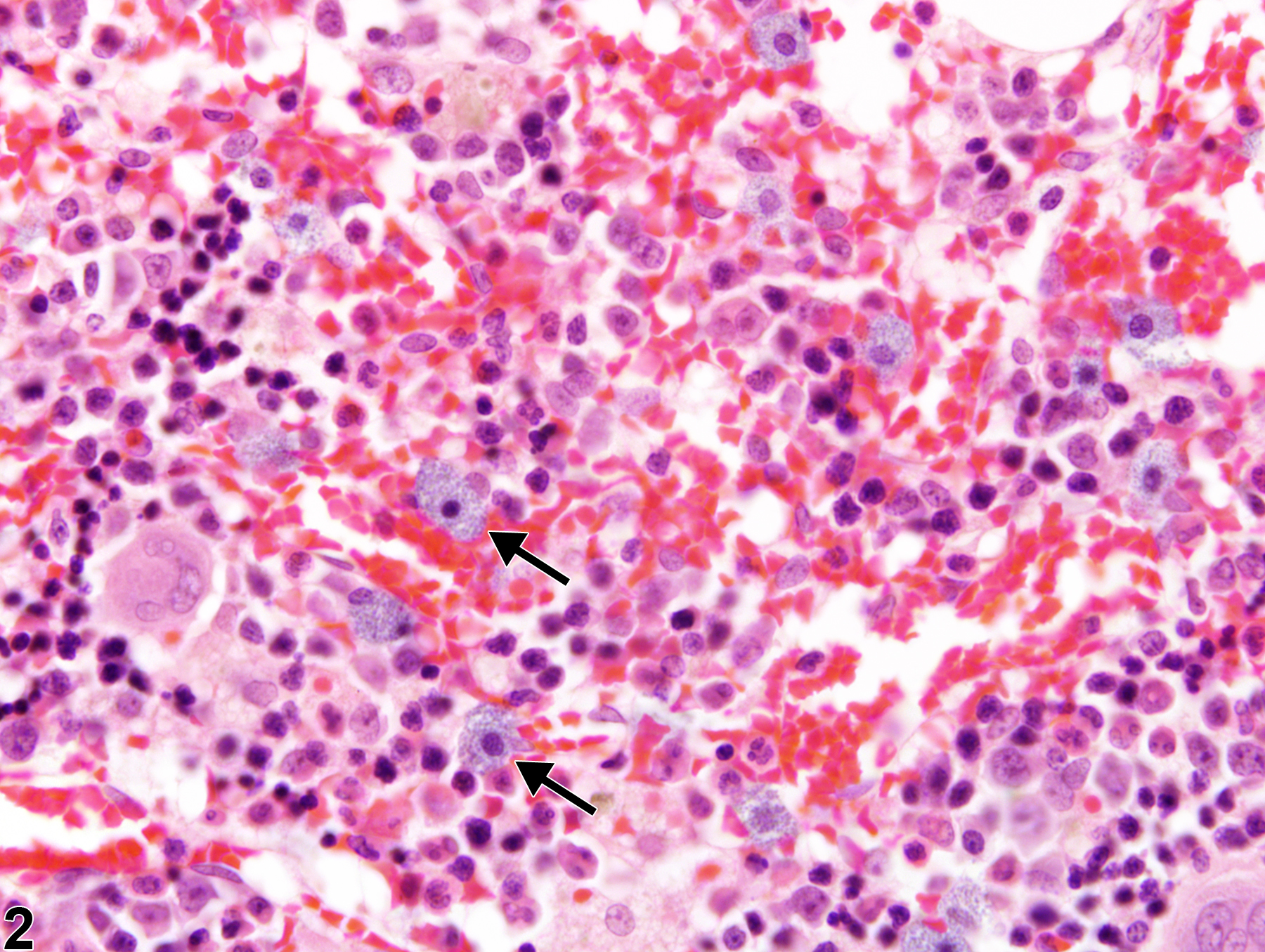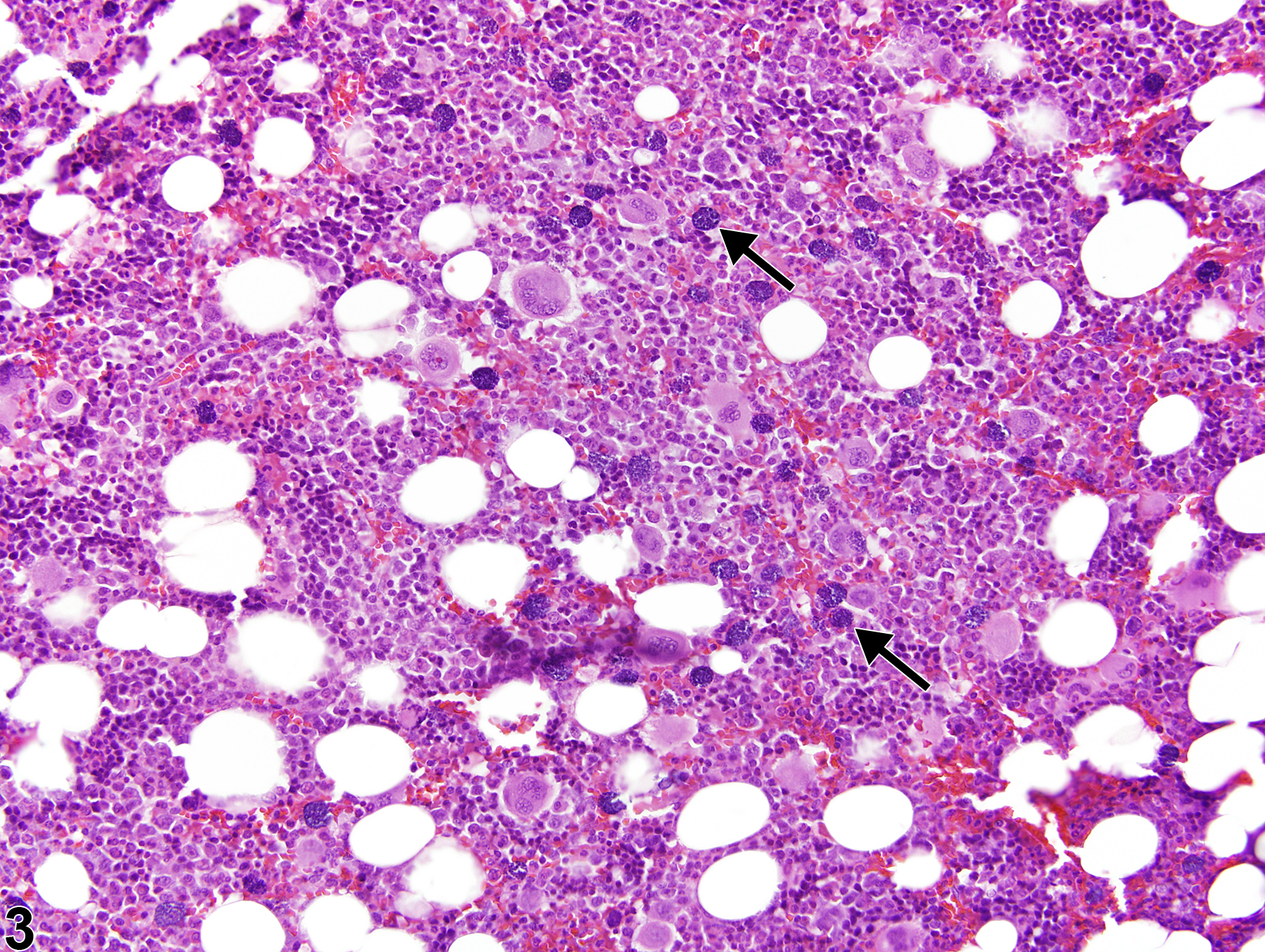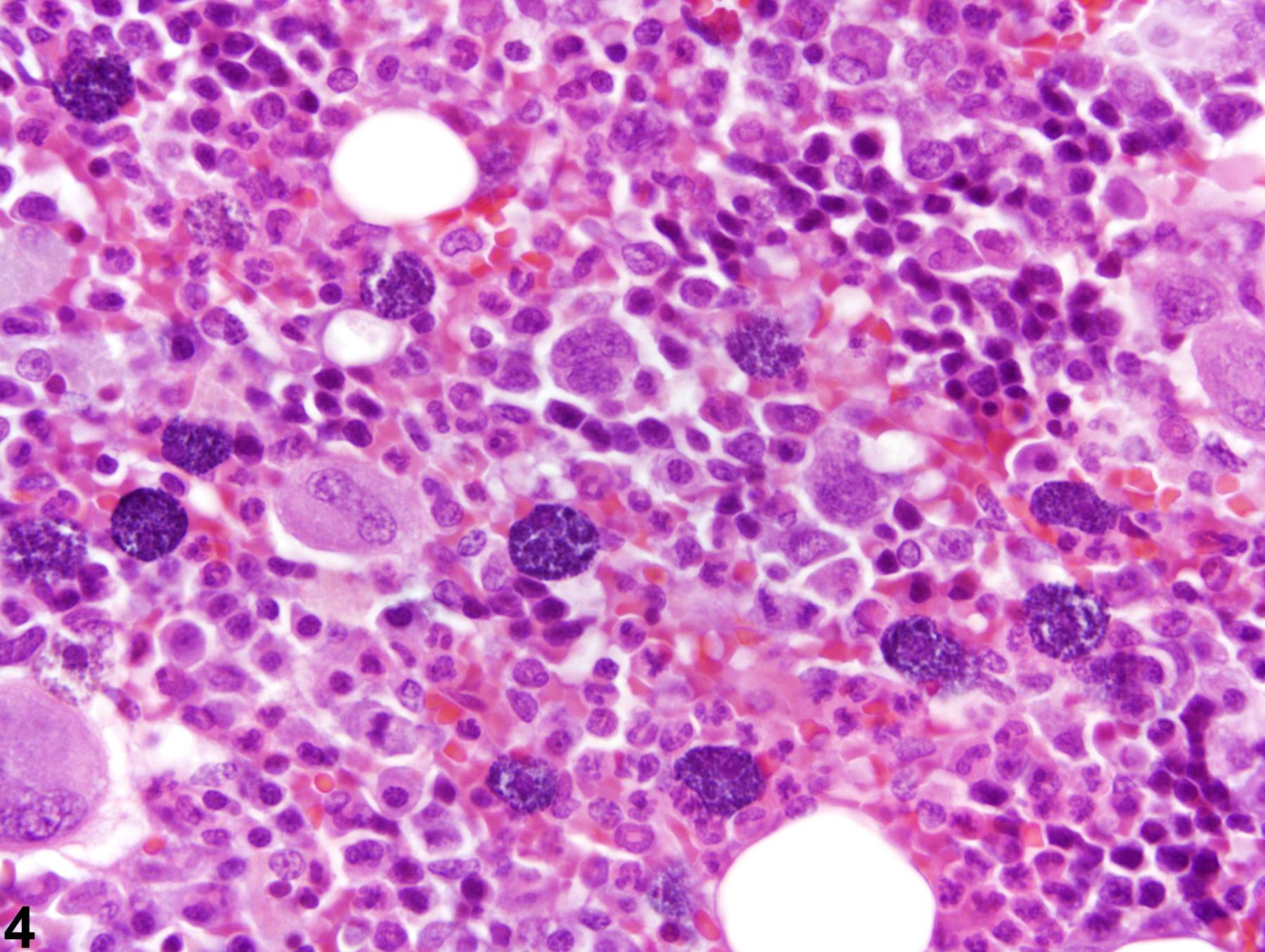Hematopoietic System
Bone Marrow - Infiltration Cellular, Mast Cell
Narrative
The causes of increased bone marrow mast cells in rodents are not well defined. In humans and dogs, mast cell infiltration is secondary to such conditions as inflammation, parasitism, uremia (renal failure), aplastic anemia, osteoporosis, and hematologic diseases (e.g., preleukemias, lymphoproliferative diseases). The increased mast cells may be accompanied by increases in lymphocytes and plasma cells.
Because of the variability of normal mast cell numbers in rodent bone marrow, comparison with concurrent controls is especially important when a perceived increase in marrow mast cells is observed in treated animals. Increases in numbers of mast cells should always be recorded and given a severity grade.
The term “mastocytosis” should not be used in lieu of the diagnosis of mast cell infiltration. In humans, mastocytosis refers to a heterogeneous group of disorders (most of which have been shown to be clonal and includes the human equivalent of mast cell tumors) characterized by abnormal growth and accumulation of mast cells in one or more organ systems. The diagnosis of a bone marrow mast cell tumor in rodents is appropriate when mast cells are found in multifocal or diffuse, dense compact clusters or sheets. However, the presence of increased numbers of loosely scattered mast cells in and of itself warrants a diagnosis of infiltration, unless other criteria (e.g., atypical morphology, mast cell tumor in another location) are indicative of neoplasia.
Bain BJ, Clark DM, Lampert IA, Wilkins BS. 2001. Bone Marrow Pathology, 3rd ed. Blackwell, Ames, IA, 90-140.
Abstract: http://onlinelibrary.wiley.com/book/10.1002/9780470757130Bookbinder PF, Butt MT, Harvey HJ. 1992. Determination of the number of mast-cells in lymph-node, bone-marrow, and buffy coat cytological specimens from dogs. J Am Vet Med Assoc 200:1648-1650.
Abstract: http://www.ncbi.nlm.nih.gov/pubmed/1624339Escribano L, Orfao A, Villarrubia J, Díaz-Agustín B, Cerveró C, Rios A, Velasco JL, Ciudad J, Navarro JL, San Miguel JF. 1998. Immunophenotypic characterization of human bone marrow mast cells. A flow cytometric study of normal and pathologic bone marrow samples. Am Cell Pathol 16:151-159.
Abstract: http://www.ncbi.nlm.nih.gov/pubmed/9699944Horny H-P, Sotlar K, Valent P. 2011. Mastocytosis. In: Hematopathology (Jaffe ES, Harris NL, Vardiman JW, Campo E, Arber DA, eds). Elsevier Saunders, St Louis, 757-776.
Abstract: http://www.us.elsevierhealth.com/Medicine/Pathology/book/9780721600406/Hematopa…Jamur MC, Grodzki AG, Morena AN, de Mello LF, Pastor MV, Berenstein EH, Siraganian RP, Oliver C. 2001. Identification and isolation of rat bone marrow-derived mast cells using mast cell-specific monoclonal antibody AA4. J Histochem Cytochem 49:219-228.
Abstract: http://www.ncbi.nlm.nih.gov/pubmed/11156690Krokowski M, Sotlar K, Krauth M-T, Födinger M, Valent P, Horny H-P. 2005. Delineation of patterns of bone marrow mast cell infiltration in systemic mastocytosis: Value of CD25, correlation with subvariations of the disease and separation from mast cell hyperplasia. Am J Clin Pathol 124:560-568.
Abstract: http://www.ncbi.nlm.nih.gov/pubmed/16146815Provencher-Bolliger A. 2004. Cytological evaluation of bone marrow in rats: Indications, methods and normal morphology. Vet Clin Pathol 33:58-67.
Abstract: http://www.ncbi.nlm.nih.gov/pubmed/15195264Valant P, Horny H-P, Escribano L, Longley BJ, Li CY, Schwartz LB, Marone G, Nuñez R, Akin C, Sotlar K, Sperr WR, Wolff K, Brunning RD, Parwaresch RM, Austen KF, Lennert K, Metcalfe DD, Vardiman JW, Bennett JM. 2001. Diagnostic criteria and classification of mastocytosis: A concensus proposal. Leuk Res 25:603-625.
Abstract: http://www.ncbi.nlm.nih.gov/pubmed/11377686Walker D, Cowell RL, Clinkenbeard KD, Feder B, Meinkoth JH. 1997. Bone marrow mast cell hyperplasia in dogs with aplastic anemia. Vet Clin Pathol 26:106-111.
Abstract: http://onlinelibrary.wiley.com/doi/10.1111/j.1939-165X.1997.tb00719.x/abstract
Bone marrowin a female F344/N rat from a chronic study showing increased mast cells (arrows).





